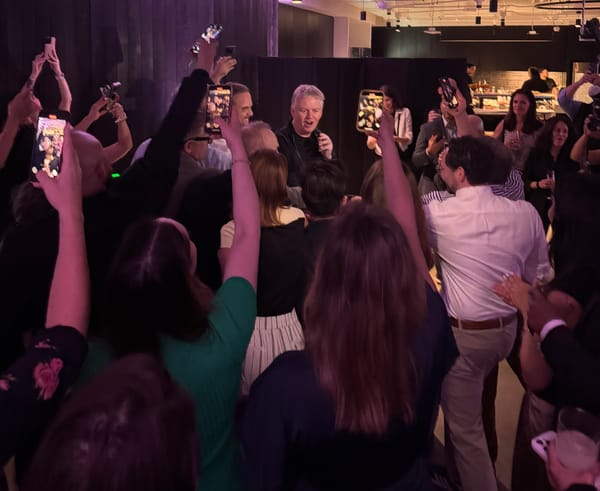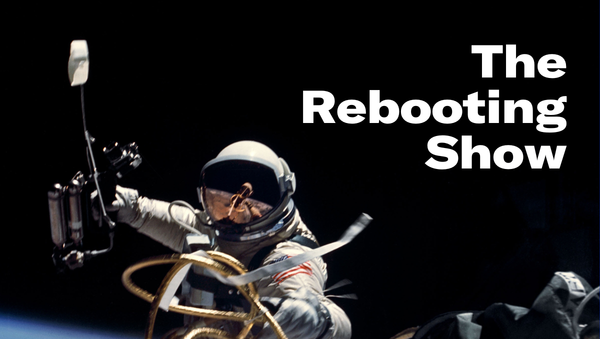Going solo
Two years in, Platformer's Casey Newton discusses the shift from journalist to solo operator
Check out the new People vs Algorithms podcast I’m doing with Troy Young. It’s available on Apple Podcasts and Spotify. This week we delved into the idea of the long tail becoming a fat tail, and how personal brands threaten institutional brands. Send me feedback too: bmorrissey@gmail.com.
This week, I spoke to Casey Newton from Platformer about two years going solo. Plus: podcasting’s niche destiny, and why makers need ownership to have any leverage. First, a message from House of Kaizen.


House of Kaizen collaborates with publishers worldwide to build more sustainable businesses with best practices and experimentation for better acquisition, retention and lifetime value. House of Kaizen’s Matt Cronin shares why subscriptions require a focus on customer experience:
News cycles, media markets and economic environments change dynamically and there’s nothing you can do about it. But subscriber experience is directly within your control. Subscribers’ experience with myriad subscription products – the best of which are testing and optimizing aggressively – creating the expectations they have for your subscription product. Continuously researching, experimenting and evolving the subscriber journey is the only way to wrestle control over the ever-changing marketplace in order to create more sustainable growth.

Casey Newton’s guide to going solo
One of the big questions of building a solo publishing brand, other than whether only a very few can pull it off, is what is the long-term value created. After all, if the brand’s value is intrinsically tied to the individual, the enterprise value of the company would be lower.
For Casey Newton, who left The Verge two years ago and has built a successful newsletter business with Platformer, that’s unimportant. The better approach is to think in increments. “Brands are so ephemeral anyway,” he told me on this week’s episode of The Rebooting Show. “Is any publication cool for longer than 10 years? There's so many zombie brands floating around. The last thing I would want is for Platformer to become Spin magazine, where it's bought by a hedge fund or the royal family of Monaco or something.”
Casey started Platformer on Substack to cover the societal impact of the most powerful tech platforms. He’s used a subscription model, charging $100 a year. With 75,000 free subscribers and what he’ll only call “thousands” of paid subscribers – Platformer is the No. 2 most popular paid newsletter in tech on Substack – Casey has built a successful solo business that’s he’s expanding by bringing on Zoe Schiffer as Platformer’s managing editor. (He’s also got a new podcast coming out in partnership with The New York Times.)
“The one thing I've learned from covering these social networks is you've got to stop yourself from having a middleman in between you and the audience. I’ve got to go get that direct connection. And there is no more direct connection than having your own business and selling a product for money.”
Subscriptions make the solo path easier. “It's ridiculously plug and play. It’s amazing to think that just by adding a subscription component to a blogging platform, you can enable hundreds, maybe thousands, of people to start their own successful businesses.”
Newsletters are more nimble: “The thing I love about new newsletters, in particular, is that they can evolve so quickly. If you go back to the five years that I've been writing a daily newsletter, now there are whole sections that used to be there that just aren't there anymore. And it's totally fine. Whereas like you work for a website, if you want to redesign it, give yourself two years. My newsletter can just evolve.”
The indie path is niche. “My hope was that two years on so many more people would be doing this. I spent that first year that I was independent talking to so many boldface name reporters at The New York times, The Atlantic, you name it, because they were all thinking about doing the exact same thing. I was trying to encourage them to do it because I was having so much fun with it and it was succeeding, but so very few people pulled that trigger. I think individually, they all had good reasons. But I have been shocked at how few people, relatively speaking, have followed. Most people have really wanted the comfort, the stability of that standard media job.”
Listen to the full episode on Apple Podcasts or Spotify. Thanks to Jay Sparks of Pod Help Us for producing the episode. (Get in contact with Jay if you’re looking to do your own podcast.)

Podcasting’s “I Love Lucy moment”
Of all media formats, podcasting has had the weirdest run. It started as a very niche, scruffy area with the homegrown feel of CB radio, never quite taking off in the mainstream. Then, with the release of Serial in 2014, podcasting was seen in a new light. The next chapter of its story would be a hit business, like TV and movies. Money poured into podcast studios, and guess what… podcasting is still mostly a niche media format with the most popular programming still decidedly lo-fi and more like radio.
Some insiders believe there’s probably never going to be another Serial-esque moment again. “The expectation that there should be one dominant podcast that all of us want to tune into is kind of foolish,” said Catherine Saint Louis, the executive editor at Neon Hum Media, the studio behind narrative podcasts Sympathy Pains and Spectacle, among others. “It’s like asking, ‘Why isn’t there appointment TV anymore?’”
I’m reminded of the early days of what was known as Web video at the time. There was excitement around progress being made in what was regrettably called “webisodes” by the likes of Yahoo and AOL with scrappy programming like “Kevin Sites in the Hot Zones.” The knock on these shows were they weren’t very popular. There was a need, I heard again and again, for an “I Love Lucy moment.” The dated reference was meant to convey that web video wouldn’t be taken seriously until it pierced the overall culture in a significant way with a mainstream hit. Podcasting ended up being held to the same outdated standard.
Web video as it was conceived back in those years never took off. Netflix ditched the DVD and streaming took the top end of the market, while the breakout web video format was nothing like TV or movies. What Mr. Beast and YouTube creators do is very different than episodic programming. It’s also very native to the internet. The same is taking place in podcasting with its breakout hits like The Joe Rogan Experience, Call Her Daddy and Smartless. I think the professional media class wants big hits to rule podcasting, but the medium will likely continue to be dominated by individuals who find an audience and develop a tie with them that’s qualitatively different than the connection between and audience and typical programming. Podcasting’s future is likely more like radio than TV and movies, and that seems perfectly fine.

Recommended
At this point, if you’re overly reliant on a single platform, you have yourself to blame. It’s not like there isn’t a track record of platforms moving the goalposts on publishers. Twitch creators are the latest to learn this lesson, as the Amazon-owned live video streaming platform is reducing the revenue split for top creators. I’m more convinced the “creator economy” is the media version of the gig economy.
Outside of monopolistic tech, being a middleman is a precarious position these days. Many publications are in just that spot. Troy Young notes that “platform-enabled creators” are increasingly able to challenge media brands with the depth and breadth of their reach – and critically with lower cost bases than the machinery required by institutional publishing brands.
Something business people innately understand that too often content people do not: It’s all about leverage. In capitalism, you have the most leverage if you have money. Next is knowing people who have money who will loan you money. Otherwise, if you’re a maker, as Lew Wasserman told Brian Grazer, you better own what you make. That’s your leverage.
As if we needed more evidence that the opinion page is a terrible idea, The Baltimore Banner is in the midst of a mini-uproar over running a column by a conservative writer that was deemed transphobic. The new local publication has done the usual apology while getting cancelation threats on Twitter. At some point – and I think we’re past that point – the opinion section is more trouble than it’s worth. Regular people do not make the distinction between the news and opinion operations. Pick a lane.
The bosses do not believe the workers are working. A Microsoft study found a complete disconnect between how managers view remote work and how workers see it. Microsoft CEO Satya Nadella calls this “productivity paranoia.” My money is on the Boss Class losing this one, for the most part, since tight labor markets are likely to continue even in an economic downturn.

Thanks for reading and listening. Get in touch about sponsorship opportunities and things you like or would like to see: bmorrissesy@gmail.com. Thanks to Matt and House of Kaizen for their support. If you have a subscription business, they can help you get to where you need to go, faster.




